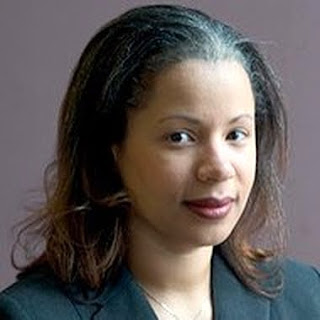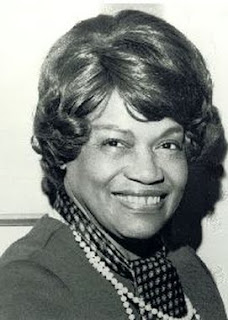First Comprehensive Data on Opinions, Attitudes of Minority Suburbanites.
Hofstra University, Hempstead, NY -- A new National Suburban Poll for the National Center for Suburban Studies at Hofstra University (NCSS) brings into sharp focus the profoundly personal impact of the economic crisis on suburbanites, with three-quarters saying they or someone they know has lost a job, suffered a cut in pay, work hours or benefits.
The findings, when compared to a National Suburban poll in October 2008, offer compelling evidence that America’s suburbs have been at the epicenter of the recession. In 2009, for example, 76 percent of suburbanites said either they or someone they knew had lost a job since October 2007, up from 51 percent last year.
“Our poll shows that job loss and foreclosure are both hitting close to home for suburbanites,” said NCSS Academic Director Christopher Niedt, Ph.D. “And when we dig a little deeper, we find that suburban people of color are feeling the economic pain even more acutely.”
This latest poll, the third issued by the NCSS, focuses on diversity and the economic crisis in the suburbs and comes as Hofstra prepares to host a ground-breaking conference Oct. 22-24, 2009 called “The Diverse Suburb: History, Politics and Prospects”. The conference will bring together academics, activists and policymakers to examine the impact of shifting demographics, and hash out the challenges and opportunities that lay ahead.
The poll oversampled minority suburban residents, making it the first poll of its size to provide reliable, projectable data about the opinions and attitudes of blacks and Hispanics in the suburbs. It was designed and conducted for the NCSS by Princeton Research Survey Associates.
“I know of no other national poll that has sought to shine a light as intensely on black and Hispanic residents of suburban communities that are undergoing dynamic demographic change,” said Lawrence C. Levy, NCCS executive director. “That the poll focuses on minorities in particular adds a whole extra dimension to the Diverse Suburbs conference, which itself will present new data and perspectives from experts and activists around the world.”
The poll also reveals that President Obama’s support among suburban residents, which was so critical to his historic election, is eroding as the economy sours. Just 47 percent of suburbanites gave him a positive job approval rating, while 31 percent – more than double the number from 2008 – said they believe the federal government’s response to the economic crisis has hurt their family finances.
Race and ethnicity also play a major role in Obama’s approval ratings among suburban residents: only 39 percent of white suburbanites gave him a positive rating, compared to 66 percent of Hispanics and 91 percent of African-Americans.
“Obama has lost support in the suburbs, where his administration’s economic policies have been particularly unpopular,” Niedt said. “He has remained popular, though, among African-Americans and Hispanic residents – precisely the groups that are suffering most.”
And while the suburbs are more diverse than ever – large numbers of residents from all racial and ethnic groups now report living in mixed neighborhoods, suburbanites see less racial tension than those living in cities. Sixty percent of suburban residents say racial tension is not a problem, compared to 40 percent in urban areas.
Yet views about race relations vary by race and ethnicity, particularly among Hispanic suburbanites. About a third of whites and African-Americans in the suburbs believe racial tension is a problem, while 46 percent of Hispanics do. And Hispanics in the suburbs are less positive about how well they get along with African-Americans than their urban counterparts. While 63 percent of Hispanics living in cities agree that they generally get along with African-Americans, only 53 percent of Hispanics in the suburbs do.
“When President Obama was elected, we heard a lot about how America was entering a ‘post-racial’ era, and in the suburbs there are some hopeful signs,” Niedt said. “For example, whites and African-Americans said that they got along with each other and with Hispanics. But for many Hispanics, the perspective is quite different, and less optimistic. Almost half said that they did not generally get along with African-Americans.”
Among other findings of the poll:
--- More than a third of suburban residents – 36 percent – say they or someone they know has lost their home to foreclosure or because they could no longer afford their mortgage payments. That’s up from 28 percent in 2008.
--- Forty-seven percent of suburbanites say immigrants face some discrimination, but the same percentage believe state and local government treat illegal immigrants too leniently. Fifty-five percent say the federal government is too lenient.
The third national Suburban Poll is based on phone interviews in English and Spanish with 1,781 adults from Sept. 21 to Oct. 4, 2009. The margin of error for the total sample is plus or minus four percentage points. For results reflecting suburbanites, the margin is plus or minus five percentage points, and for urban and rural residents it is plus or minus six percentage points.
The National Center for Suburban Studies at Hofstra University is a non-partisan research institution dedicated to promoting objective, academically rigorous study of suburbia’s problems and promise. Rooted in the laboratory of Long Island’s diverse and aging suburbs, the National Center studies a broad range of local and national issues. The suburbs have emerged as the nexus of dynamic demographic, social, economic and environmental change. The tasks of identifying, analyzing and solving the problems of suburbia are key to the health of the country – and central to the Center’s mission.
Hofstra University is a dynamic private institution where students can choose from more than 140 undergraduate and 155 graduate programs in liberal arts and sciences, business, communication, education and allied health services, honor studies, as well as a School of Law, ###
Media Contact: Karla Schuster. University Relations Hofstra Hall 202 Phone: 516-463-6493 Fax: 516-463-5146
Send an E-mail




























